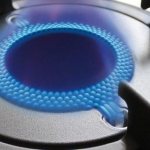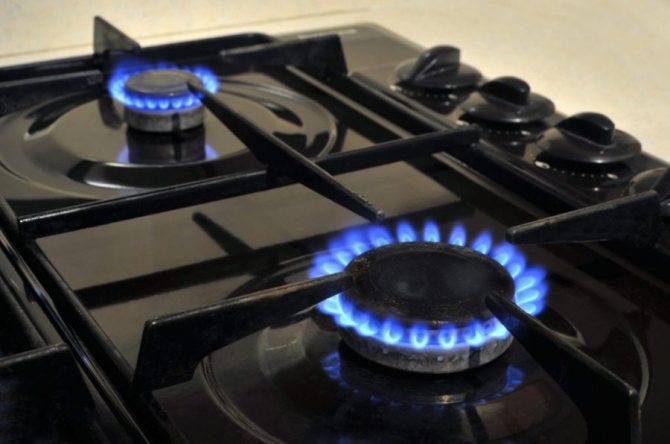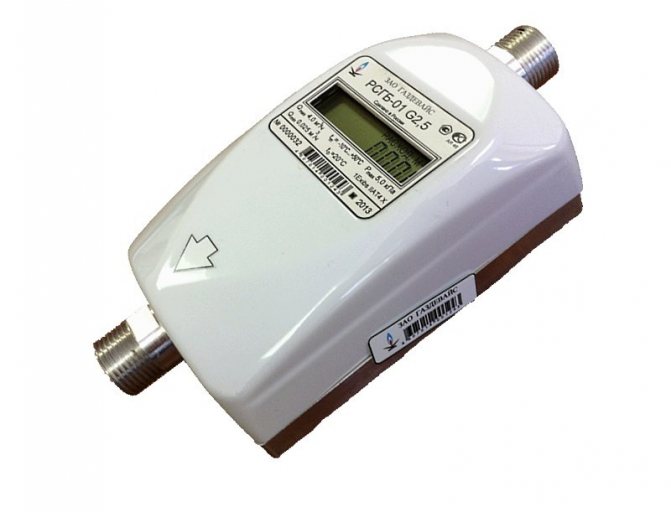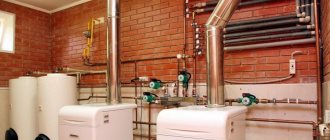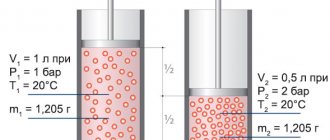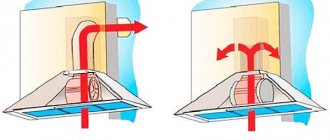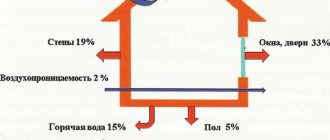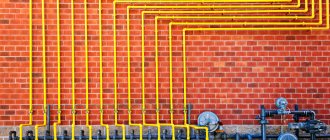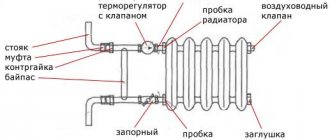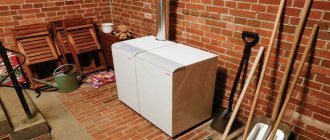Why do you need to know the gas consumption?
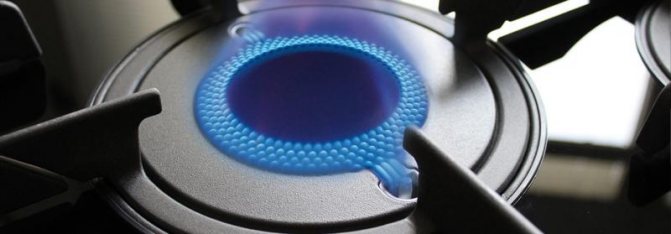
Household metering devices are used to know how much blue fuel was consumed over a certain period. But in order to install a meter, you must initially know how much blue fuel is consumed per month. It is not the average indicators that are taken into account, but the maximum parameters. For example, if the hot water in the house is turned off and you will have to use the kitchen stove often to heat it.
What is this data for? Very simple - each meter is designed for a certain amount of fuel consumed. If the power of the stove is small and there are no other devices and appliances operating on gas in the house, you can get by with the simplest and most inexpensive meter. If a water heater and individual heating are additionally used, the throughput of the meter should be much larger. It will also be necessary to replace the gas pipeline pipes by choosing a complete set with a large diameter.
How to calculate the consumption of domestic gas by capacity so that you can choose the "correct" metering device?
These data are given in the instructions for the cooker. If the documents are lost or there are problems with the translation of the data specified in the passport to kitchen appliances, you can use the average indicators: A 4-burner hob consumes 1-1.3 m³ / hour.
How to take meter readings
So that when calculating the cost of the fuel actually consumed per month, an astronomical amount does not turn out, you need to remember how to correctly take the gas meter readings in the apartment.
To begin with, let us mention that the device shows the total volume of fuel consumed since the moment of installation. It doesn't have a feature that only shows data from the past month. Therefore, the consumer must:
- Write down the actual figure at the moment.
- Subtract from it the amount that the device showed last month. The previous data can be viewed in the invoice-receipt. The supplying organization indicates the indication for which the last payment was made.
The result will be the volume of gas consumed during the month.
And now we will discuss how to look at the readings of the gas meter so that the calculation of the amount is correct. Looking at the device, the user sees a scoreboard in which the numbers are separated by a comma.
There are always three digits after the decimal point, which are reset whenever the consumption exceeds the next step, and then the counting starts over.
When taking readings, you should ignore everything after the comma, and write out only the readings before it. Of course, leading zeros do not need to be taken into account either.
On some counters, the last three digits are highlighted in red or even placed in a separate field. In this case, the tenant needs to ignore the number highlighted in red or indicated in the right field, otherwise he will receive incorrect readings.
Individual meters for metering gas consumption are produced by different manufacturers in different designs. The manufacturer usually highlights numbers somehow that the consumer does not need to consider when paying the monthly bill. In any case, the last three digits on the scoreboard will be somewhat different - a different color, a frame, and so on.
If the gas meter is electronic, there is no highlighting of numbers in a different color or frame on its display. In this case, only the comma matters, so you should ignore the readings after it.
Information in GOST
Information on the power of burners is strictly regulated by GOSTs and if the stove has the appropriate certificates and is allowed for installation in an apartment or residential building, it must comply with these parameters. So, in residential buildings it is allowed to install gas stoves with 2, 3 or 4 burners, the standard power of which should be:
- 0.6 kW - reduced;
- 1.7 kW - average;
- 2.6 kW - high.

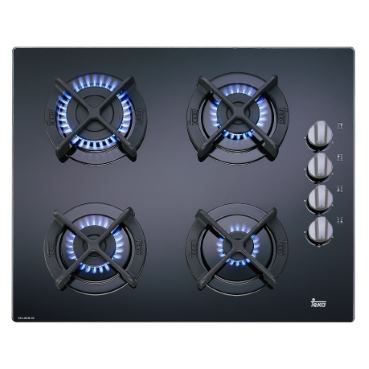
Information about the power of the burners is in GOST
Additionally, it is worth calculating the power of the oven, the average values of which are within 2.5 kW. The final parameters will be about 10 kW.
Many people ask how it is possible to increase the power of a gas burner if it is insufficient or if it is necessary to transfer the stove from liquefied gas to the mains. Despite the fact that many experts give advice on how to do this correctly and what manipulations should be carried out with the valves, the burner itself, the gearbox, all these methods are illegal and unacceptable in relation to gas appliances. Such refurbishment can lead to accidents in the home and huge fines from the gas service. If the power of the stove is insufficient, the equipment must be replaced with a new one.
Conclusions and useful video on the topic
An illustrative example of calculating the cost of heating water with devices of different types:
A way to reduce gas consumption and save time on hob cleaning:
Gas consumption and total power of the burners are directly proportional. If we imagine that the parameters for calculating consumption are equal to the average, it will be enough to know the performance of the burners, and it will become clear how much they save gas.
You cannot do without formula calculations if you know the exact efficiency of the model or are going to determine it. After power, this is the second most important metric in terms of costs. Stoves with a hob and a gas oven have higher fuel consumption, but a gas stove can be better in cooking quality than an electric one with high efficiency.
Write comments on the fuel consumption of gas stoves. Tell us if you have measured the gas consumption of the stove. If yes - then write why and what it gave you. The contact form is located below.
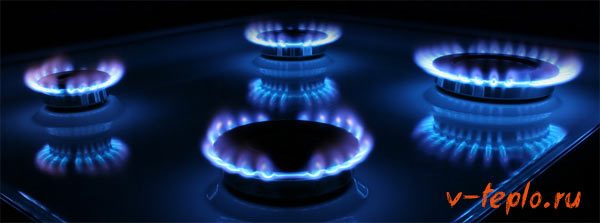

The need to install gas meters has increased in the face of widespread gasification. In turn, this need put the owners of the living space in front of a new task - to learn how to carry out the correct calculations for choosing a suitable model of the accounting device. And one of the most important points in the calculations is the consumption of the gas stove per hour, including the indicators of other equipment operating on gas. This is what will be discussed in today's article.
Consumption determination rules
It is almost impossible to determine how much gas will be spent per hour, day, month, since there will be too many variables in the finished formula:
- the number of people living in the apartment (house);
- culinary addictions (dumplings are cooked for 15 minutes, cooking cutlets will take about 1 hour);
- using the burners at full or half power;
- season;
- use of dishes with different thermal conductivity.

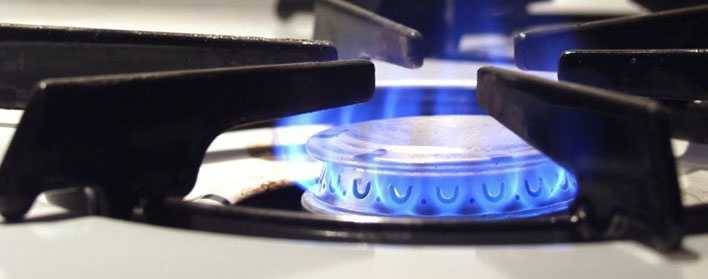
It is almost impossible to determine how much gas will be spent
Considering all this, it is possible to find out how much gas a gas stove consumes per month, hour or for another period of time only very approximately.
How to determine the gas consumption of a gas stove per hour
How to correctly calculate the gas consumption in m³, knowing only the power of the burners? For this, the total power of the stove is divided by the thermal conductivity of the gas (average values are 8-11 kW * h / m³).
If, for example, take a stove with an average power of 0.6 kW (1 pc.), 1.7 kW (2 pcs.) And 2.6 kW (1 pc.), Then the gas consumption per hour will be:
- 6.6 / 9.5 = 0.7 m³
If we take into account the gas oven, we get the following data:
- (6.6 + 2.5) / 9.5 = 0.95 m³
These calculations are arbitrary and imply the simultaneous operation of all 4 burners at full power for 1 hour (+ oven). The real parameters of gas consumption can always be found out by the meter, which records the amount of used blue fuel.
Top 10 gas water heaters
Bosch WR 10-2P


This water heater is quite large. You can use two taps at the same time - this will not affect the efficiency of work and the temperature of hot water. Ignition is carried out using a piezoelectric element, which ensures easy switching on of the device. A work indicator and a gas sensor are provided inside. If it works, then the column is automatically turned off.
The burner is made of high quality stainless steel. The heat exchanger is copper, has a long service life - about 15 years. The device does not overheat during operation. It is quite easy to connect the Bosch WR 10-2P to the water supply system, besides, it does not weigh too much - it can be easily hung on the wall. The water heater is connected to the gas supply exclusively by a specialist of the gas company. For its price range, this is one of the best water heaters.
Benefits:
- Works reliably and stably;
- With timely maintenance, no complaints arise;
- Long service life;
- Acceptable price.
Disadvantages:
- The piezoelectric element does not always work;
- A significant number of control sensors that are usually not needed or quickly fail during operation.
Ariston Fast Evo 11B
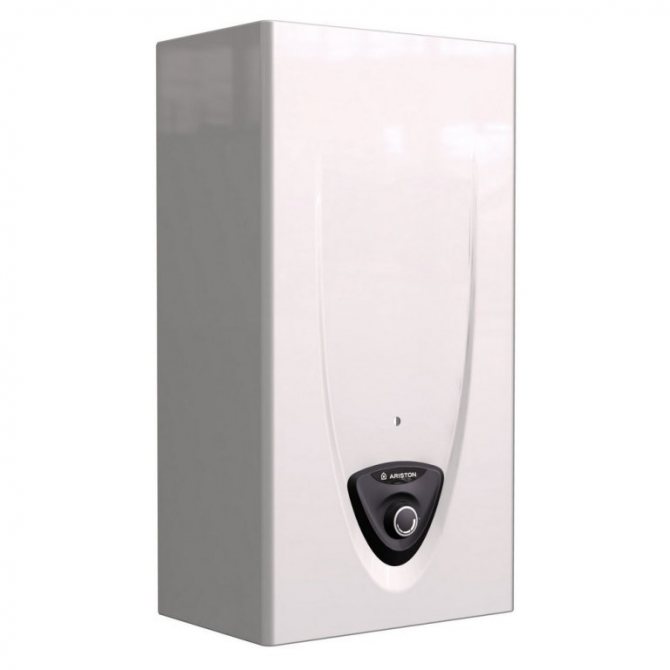

This automatic device, the heater is able to turn on and off by itself. Productivity is about 14 liters per minute, making it one of the optimal for centralized water supply systems, which produces about 9-11 liters per minute. The temperature is regulated only once - in the future, the water heater will maintain it on its own.
It is very simple to operate the device - there is only one handle on the case, which is responsible for temperature control. This heater does not have a display, so the water needs to be adjusted according to the sensations. To the left of the rotary handle is a special indicator light. If it lights up, it means that there is a need to replace the batteries in the piezoelectric element. When it flashes from one to five times in a row, you need to call the master. The water supply at the heater is lower, which makes it easier to connect the device. Near the water inlet, the device has another knob that adjusts the volume of water entering the heater. In fact, this is a standard regulator valve.
Benefits:
- Attractive appearance;
- High build quality;
- Ease of management.
Disadvantages:
- The copper heatsink is quite thin - leaks occur quickly in some models;
- Batteries in piezo ignition are discharged rather quickly;
- Clogged with limescale if the water is hard.
Zanussi GWH 10 Fonte
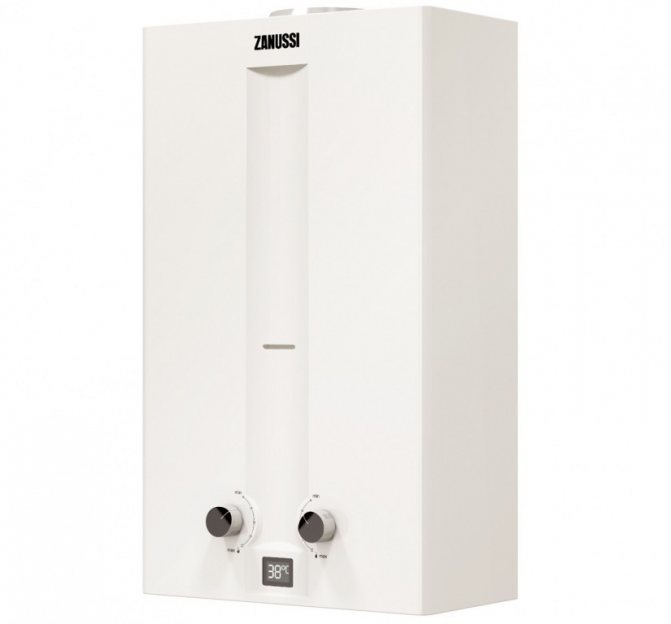

This is the only heater in this rating that has a manual ignition system. Its design provides a handle that allows you to adjust the magnitude of the flame, to the right of it there is another handle, which is responsible for the supplied volume of water. A digital display is installed under them, where the hot water temperature is displayed. It turns on when the tap is opened.
More: TOP 10 best and safest table lamps, how to choose?
A coarse filter is installed at the water inlet, which traps debris, which prolongs the life of the heater. The model has a low weight, due to which it can be easily hung on the wall. It is forbidden to connect to the gas line yourself. The heater works almost silently.
Benefits:
- Copper heatsink is tin plated to extend service life;
- High power level - about 19 kW;
- Weight is only 5 kg;
- The presence of automatic protection against overheating;
- Display showing water temperature and possible errors.
Disadvantages:
- The automatic shutdown system works at low water pressure;
- After some time of work, it starts to make claps;
- The need to turn on manually;
- The temperature has to be regulated all the time.
Neva 4510-M
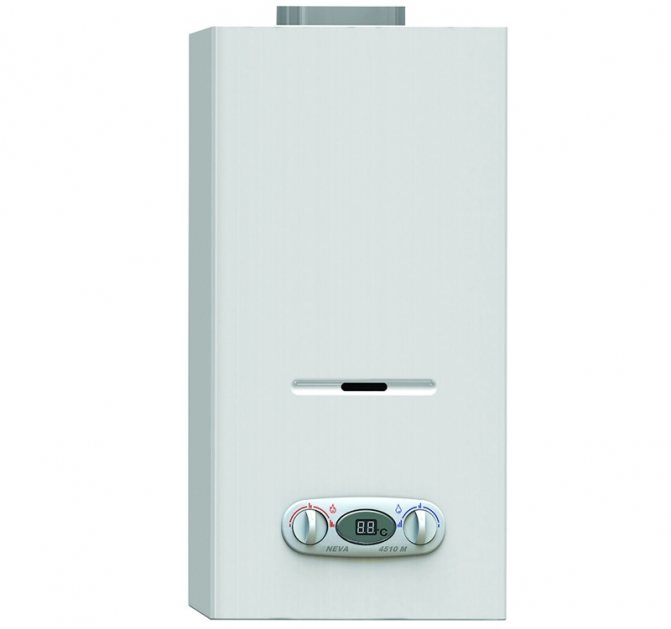

This is a fairly compact design with a small flat body. The heat exchanger is made of copper, the ignition is set to automatic. It is an upgraded 4510 model. The capacity remains the same at 10 liters per minute. To this has been added the modulation of the burner flame depending on the water pressure. There is no need to constantly monitor and regulate the temperature.
On the front side of the body there are two control knobs: one is responsible for the flow of incoming water, the second is for setting the temperature. There is a digital display in between for more precise adjustments. In addition, the design provides a significant number of sensors that ensure the reliability of operation and the safety of its use. They are responsible for the size of the flame, water temperature, draft, there is a gas control system that does not allow leaks.
Benefits:
- Simplicity of construction;
- Maintainability;
- Low cost of spare parts;
- Acceptable cost;
- Small dimensions;
- Ease of use.
Disadvantages:
- Components periodically fail;
- Short service life of the heat exchanger.
Mora vega 10
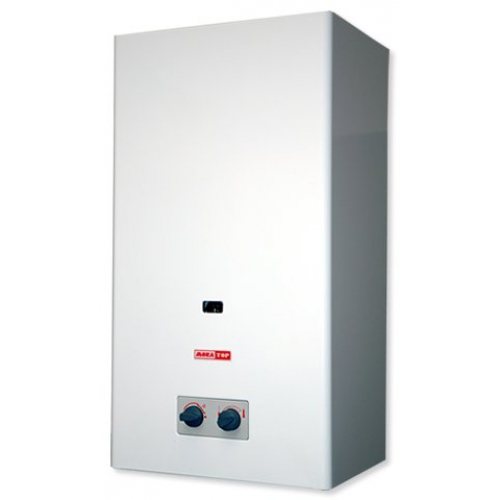

The maximum thermal power of this device is 17.3 kW, the effective throughput is 10 liters per minute. This is one of the best gas water heaters, it is additionally equipped with an electric ignition system, well suited for domestic water supply systems. The design has a small size, high performance. The column has a long service life and can be repaired if necessary. It houses a back draft valve that prevents combustion products from entering the room - this makes the column absolutely safe during operation.
An ionization electrode is also provided, which shuts off the gas supply if the flame suddenly goes out. The column can fully provide three parsing points with water at once. Another advantage is the ability to work with natural or liquefied gas.
Benefits:
- There is an electric ignition system;
- Open combustion chamber;
- Wall-mounted column, gas and water are supplied from below;
- There are a number of functions that are responsible for safe operation;
- There are two knobs in the design - one is responsible for the maximum heating temperature of the water, the second regulates the magnitude of the burner flame.
Disadvantages:
- Condensation forms on the cold water pipe during the summer months;
- If the column is idle for about 7 hours, then the heat exchanger heats up very much from the wick - because of this, boiling water comes out for several seconds after turning on the water;
- Cracks appear on plastic parts during operation, this leads to the need to replace them.
Neva 4511
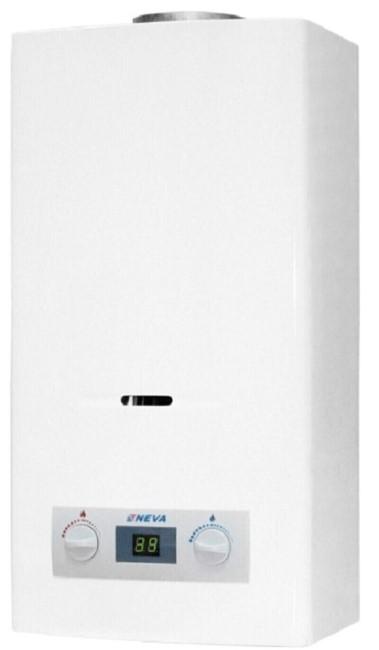

The model is a classic instantaneous water heater, which is produced by a well-known Russian. The products are equipped with an automatic ignition system - just open a hot water tap. It works offline, so you don't have to connect the device to the mains, the main thing is to change the batteries in a timely manner. On the front panel there is a viewing window and two control knobs. One is responsible for the water pressure, and the second allows you to select the required temperature. The heater's productivity is 11 liters per minute, that is, this power will be quite enough to provide two points of water intake at once.The products have a heat exchanger made of copper, the gas burner has 10 sections at once. The nozzles are made of brass.
More: Sven HT-202 - Complete 5-in-1 Speaker Review
There are two temperature sensors at once - working and emergency. The gas control system and the traction sensor installed on the combustion chamber are responsible for the safe operation of the product. If the chimney is clogged or the draft has decreased for another reason, then it will simply turn off the column. The product runs on natural gas, but it can also be converted to liquefied fuel, but this will require replacing the nozzles with special nozzles with a smaller diameter passage. Fuel consumption is not too high - 2.2 cubic meters of gas per hour. The efficiency of the equipment is high: it is 87%. The column is mounted to the wall, does not take up useful space. The body is made of galvanized painted steel, the weight of the device is only 10 kg with overall dimensions of 56.5x22.1x29 cm.
Benefits:
- Simple enough construction;
- Autonomous automatic ignition system;
- It can work even at low pressure in the water supply system;
- Compact overall dimensions.
Disadvantages:
- Quite a lot of noise;
- The burner flame is not modulated smoothly.
Bosch WRD 13-2G
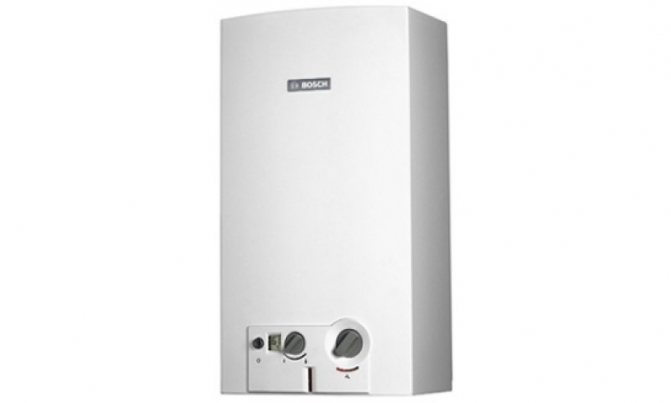

Differs in reliable operation, the kit includes everything you need for wall mounting. It is equipped with an automatic ignition system and a hydrodynamic generator, which ensures the stable operation of the device. On the front side there is a multifunctional indicator board that allows you to control the level of water heating and possible errors in the operation of the equipment. The power of the structure is controlled, which allows to reduce gas consumption; batteries are not provided in the automatic ignition system.
The heat exchanger is made of lead or tin free alloys. All plumbing fittings are made of polyamide, which is additionally reinforced with fiberglass. A sensor is provided that protects against backdraft, there is an outlet temperature limiter, which increases the safety of the device. The column has a valve, due to which you can change the volume of supplied water.
Benefits:
- Compact device;
- Reliable build;
- Stable work over time;
- The temperature can be adjusted to within a degree;
- The water is heated smoothly, without surges;
- The burner goes out when the hot water tap is closed.
Disadvantages:
- The hydrogenerator emits a loud whistling sound;
- Reacts sharply to pressure drops in the water supply system;
- There is no protective cover at the bottom.
Bosch W 10 KB
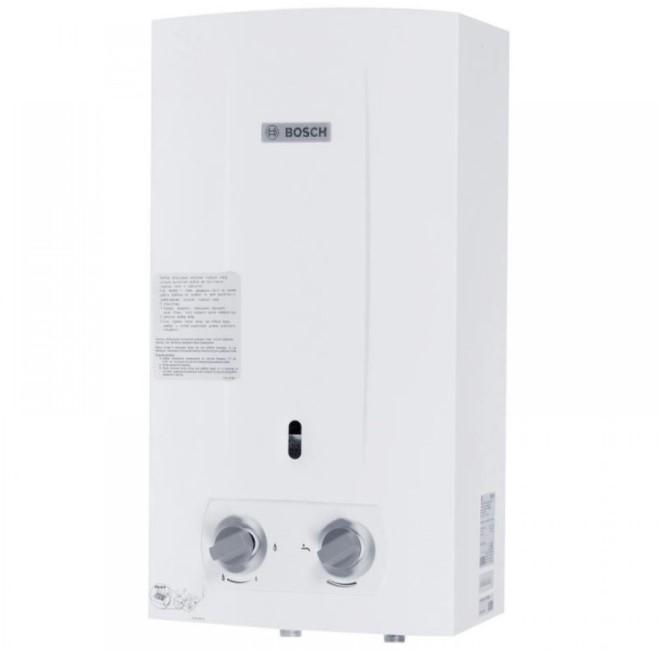

Reliable and safe design, capable of providing two or three points of draw-off with hot water at once. With its help, you can quickly and comfortably heat water to the required temperature. Ideal for domestic use. The system has reliable protection against overheating, and is also equipped with a reliable technology for protecting the room from the penetration of flue gases. An atmospheric burner made of stainless steel is installed here. Copper heat exchanger. The average productivity of the device is 10 liters per minute at a hot water temperature of 25 degrees. The power of the water flow and its temperature are regulated manually. The column is capable of operating at low water pressure in the system - from 0.15 bar. If there is no access to the natural gas system, the device can be converted to liquid fuel.
More: Comparison of robotic vacuum cleaners iRobot Roomba 960 and Gutrend Echo 520
The flame control sensor is ionization, which allows you to control the water temperature with an accuracy of one degree. The ignition system is electronic and runs on batteries. The mass of the device is insignificant - only 10.5 kg with dimensions of 400x850x370 mm.A system responsible for traction control is also installed here, which is able to automatically turn off the device, there is a maximum temperature sensor. It prevents water from heating above a certain threshold. The copper heat exchanger is equipped with turbulators to prevent deposits and scale formation.
Benefits:
- Acceptable cost;
- Heats water quickly to the specified parameters;
- The column can operate even at low pressure;
- Compact overall dimensions;
- High quality production;
- Attractive appearance;
- Long period of operation.
Disadvantages:
- It ignites with a very loud click;
- Batteries are not included.
Electrolux GWH 12 NanoPlus 2.0
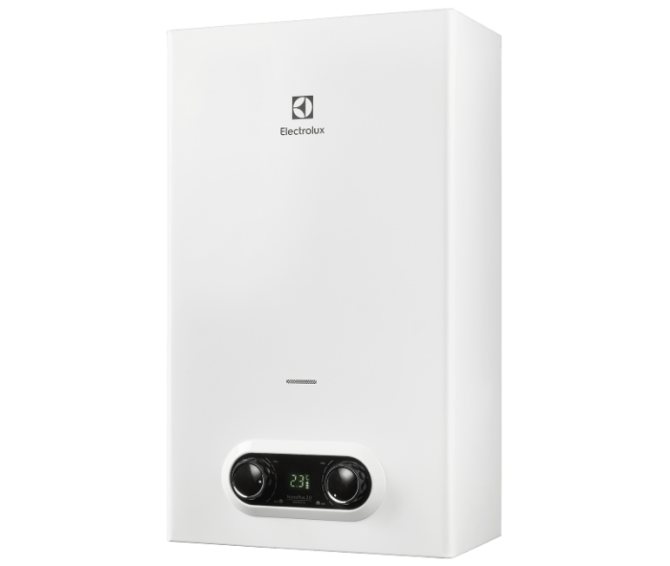

In geysers of this series, only the most modern technologies are used, with the help of which it is possible to ensure comfortable and absolutely safe operation of this device throughout its entire service life. The water heater fully complies with all the requirements that apply to similar equipment. It has a battery-operated electronic ignition system. The controls are intelligent and intuitive. Safety control is multi-level - for this, a large number of different sensors are provided: gas leaks, ingress of combustion products into the room, maximum water heating temperature, and so on.
A liquid crystal display can be found on the front of the case, which informs the user of the temperature of the water in the system and the remaining battery charge. The burner is made of high-alloy stainless steel, which can withstand high temperatures for a long time, as well as its significant drops. Gas consumption is insignificant, the column works almost silently, it is capable of heating water even at low pressure in the system. The productivity of the device is increased - it is about 12 liters of water per minute. The chimney diameter here is 110 mm, so absolutely all combustion products will immediately enter the hood.
Benefits:
- Quiet work;
- Heats water almost instantly;
- Economically consumes battery power;
- Ignition functions without interruption;
- Digital temperature indicator.
Disadvantages:
- It is not advisable to use alkaline batteries.
Gorenje GWH 10 NNBW
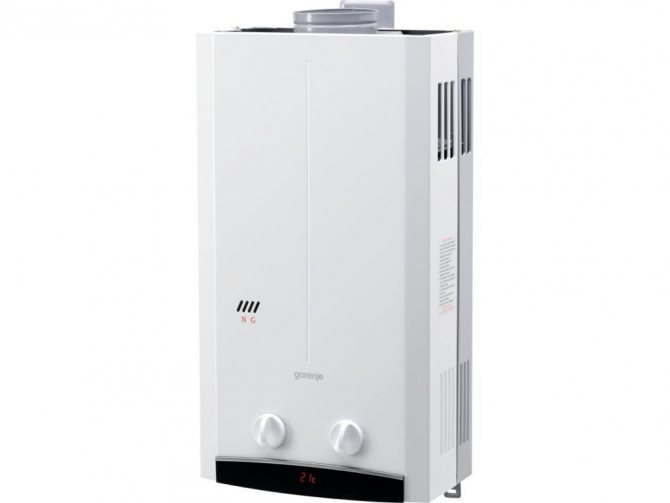

Leader in the rating of reliability and quality among gas water heaters. Up to 5 draw-off points are easily powered from it. The maximum power of the device is 20 kW. The column quickly heats up the required volume of water to the required temperature. The gas is ignited by means of electric ignition.
The radiator is made of copper, practically does not make noise during operation, and has an attractive appearance. Absolutely safe design due to the provided "gas control" function - it does not allow the slightest gas leakage. There is a filter at the inlet that filters out coarse water pollution. All settings are displayed on a special display - the set water temperature is displayed, there is an on indicator.
Benefits:
- Quiet work;
- The possibility of smooth settings;
- Small size;
- Fast ignition.
Disadvantages:
- Some difficulties may arise when replacing the coarse filter.
One counter or several?
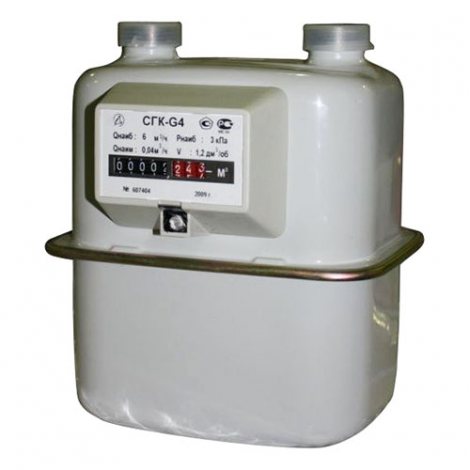

It would seem that the answer is obvious. Two meters require additional financial costs for installation, design and purchase of the device itself. On the other hand, the presence of a second meter is justified if, in addition to the gas stove, other equipment that runs on blue fuel is used in the house. At the same time, the difference in average gas consumption indicators is very large and metering devices are not able to cover such a range. It will either not catch the minimum indicators (0.3 m³ / h), or it will not cope with high loads (more than 7-8 m³ / h). And then the second meter becomes a necessity.
The choice of suitable meters depends on the maximum (not minimum) power of the household appliance. Metering devices have special markings to help you choose a device with the most suitable operating parameters. A meter marked G1.6 or G2.5 is suitable for the stove, and the gas consumption of the boiler and gas column will be counted by a meter marked from G4 or more.
Important: if, in addition to the stove, a double-circuit boiler is used, and not two separate devices for heating and heating water, a second counter is not needed.
Features of mounting an accounting device
The rules for installing a gas meter are very simple - this work should only be performed by a specialist. Its tasks include:
- Choosing a place to install the meter. It should be borne in mind that the meter should be located at a certain distance from the heating elements and be accessible for taking readings, performing installation and dismantling works;
- Directly mounting the meter;
- Sealing metering device.

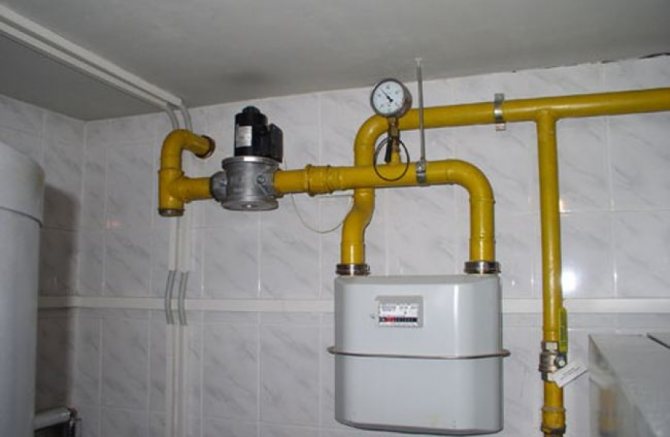
Installed gas meter
Nuances and additional factors
There are special programs for calculating fuel consumption that will greatly facilitate the work. For apartment buildings that are connected to the main gas supply, norms for its consumption are established.
Despite the available techniques, for a more accurate result, it is still recommended to contact a specialist. After all, the calculation of the need for a gas boiler takes into account the use of fuel only for heating the house.
But you also need to remember about the presence of a gas stove, a system for heating water, which will increase your costs. For the consumption indicator, the number of people living in a house or apartment is also important. All these factors will be taken into account by specialists.
In addition, the foremen will help to minimize gas consumption through the use of special technologies.
Gas saving tips
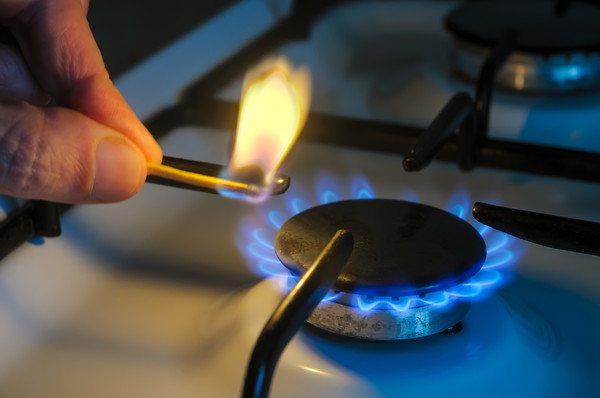

Despite the fact that payments for blue fuel used for cooking make up the smallest share of utilities, the savings are never superfluous. The desire to reduce costs, regardless of what gas is used in the gas stove, are quite justified, especially since they do not require any special efforts:
- If the dishes are closed with a lid, the water in it will not only boil faster, but the gas savings will average 20%. This method is effective for all types of dishes;
- The bottom of the pot should be slightly larger than the burner flame. In this case, the heat is not wasted;
- If the recipe does not involve gradual heating, the contents of the pot should be brought to the maximum temperature as quickly as possible. Otherwise, significant heat loss occurs through the walls of the dishes;
- Drafts and air conditioners blow the flame to the side, increasing the heating time and gas consumption of the gas stove, on average by 10-15% per hour;
- Do not use the stove for longer than necessary. This applies to a boiling kettle, a hot skillet, boiled eggs. When preparing some dishes, it is generally recommended to turn off the gas a little earlier than the food is ready. For example, when cooking cereals and pasta.
Watch a video about installing a gas meter
How to reduce gas costs
The calculated gas consumption for heating the house does not affect the costs associated with hot water supply or using a gas stove for cooking. So that the real figure is slightly more or even less, it is recommended to think about taking measures that will save money. Among the most common are:
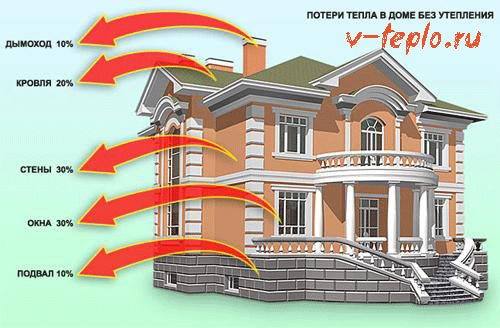

- Roof insulation
- Wall insulation
- Replacing old windows with new ones
Roof insulation
One of the weak points in a private house is the roof. Hot air, rising up, will be replaced by colder masses from the attic, if the paths there are "open" for it.
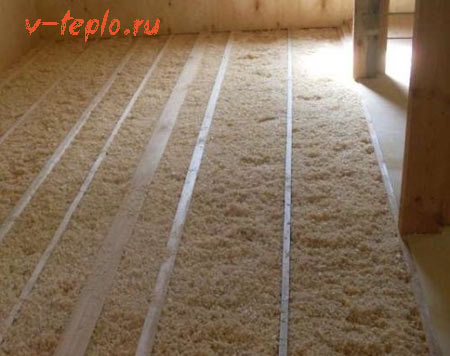

The easiest and most inexpensive way to prevent heat loss is to install mineral insulation (sold in rolls or slabs) in the attic space.They fit easily between the rafters, requiring no additional fixation or finishing.
You can read detailed instructions on roof insulation here
Wall insulation
More than 45-50% of the heat leaves the house through the cracks in the walls
That is why it is so important to insulate them with high quality using any preferred thermal insulation material on the market.


The easiest way to insulate walls is to use regular polystyrene foam or its more modern varieties, for example, extruded polystyrene foam. Once the slabs are fixed to the wall, they can be easily and quickly sheathed with siding or plastered.
You can find a detailed guide to insulating walls from the outside in
Replacing old windows
Older windows are "open doors" for expensive heated air. Experts say that about 20-30% of the heat escapes through them, which is replaced by cold air currents.
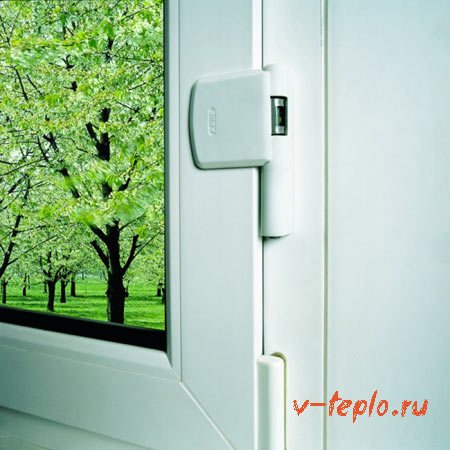

It is possible to seal all the cracks before each heating season, but in this case you will have to face constant troubles. There will be savings, but they are very ghostly compared to those achieved by installing new PVC models.
Other popular methods
It is worth paying attention to how modern equipment for gas heating is installed. Newer and more multifunctional boilers are characterized by greater efficiency
Additions such as a circulation pump and a temperature sensor will not be superfluous.

